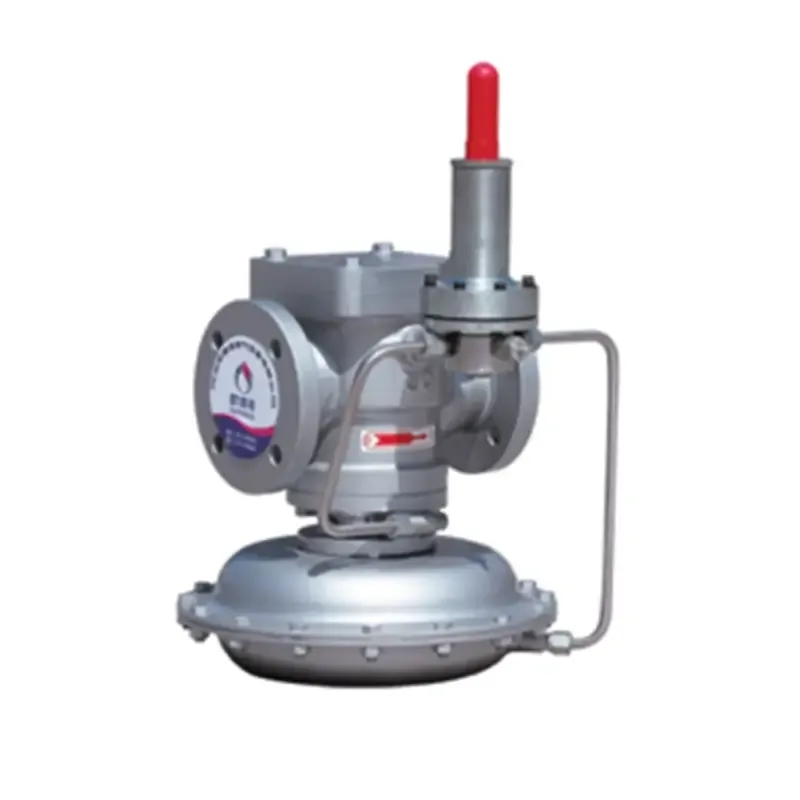
Oct . 12, 2024 19:27
Back to list
gas regulator
Understanding Gas Regulators Importance and Functionality
Gas regulators play a crucial role in various applications, particularly in industries where gases such as natural gas, propane, and butane are utilized. These devices are essential for ensuring the safe and efficient use of gas in residential, commercial, and industrial settings. In this article, we will discuss what gas regulators are, how they function, and their significance in our daily lives.
At its core, a gas regulator is a mechanical device that reduces the pressure of gas from a high-pressure source to a lower, usable pressure level. The need for gas regulation arises because gas is often supplied from a source that maintains a high pressure to facilitate transportation; however, the equipment and appliances that consume gas, such as stoves, heaters, and industrial burners, require a stable and lower pressure for optimal operation. The gas regulator's function is to automatically maintain this lower pressure, ensuring that the appliances receive a consistent flow of gas.
The basic components of a gas regulator include an inlet, outlet, valve, spring, and diaphragm
. The inlet connects to the high-pressure gas source, while the outlet leads to the appliance. The regulator works by utilizing the diaphragm, which responds to changes in gas pressure, and the spring, which adjusts the valve's position. When the pressure drops at the outlet, the diaphragm moves, causing the valve to open wider, thus allowing more gas to flow. Conversely, if the pressure rises above the set point, the diaphragm will compress the spring, reducing the gas flow. This automatic adjustment guarantees a steady output pressure regardless of fluctuations in the incoming gas pressure.gas regulator

One of the primary advantages of gas regulators is their ability to enhance safety. High-pressure gas can be hazardous; if not regulated properly, it can lead to gas leaks, explosions, or equipment damage. Gas regulators act as a protective barrier, preventing excessive pressure from reaching the appliances and reducing the risk of dangerous scenarios. Moreover, many regulators are equipped with safety features such as pressure relief valves, which discharge gas in case of over-pressurization, adding an extra layer of protection.
In addition to safety, gas regulators also contribute to energy efficiency. By providing a consistent gas flow rate, they help appliances operate at optimal levels, minimizing wastage and ensuring that energy is used effectively. This not only leads to cost savings for consumers but also contributes to environmentally friendly practices by reducing emissions associated with gas consumption.
The applications of gas regulators are extensive. In residential settings, they are commonly used for heating systems, water heaters, and kitchen ranges, ensuring that households have access to safe and reliable gas supply. In industries, gas regulators are critical for processes involving welding, combustion, and manufacturing, where precise gas control is vital for operational success. Additionally, in the medical field, gas regulators are used to control the flow of gases for respiratory therapies and in hospitals, underscoring their versatility.
In conclusion, gas regulators are indispensable devices that ensure the safe, efficient, and reliable use of gases in various applications. Their ability to maintain stable output pressure not only enhances the safety of gas consumption but also promotes energy efficiency. As we continue to rely on gas for numerous everyday activities, understanding the role and functionality of gas regulators becomes increasingly essential for both consumers and industry professionals.
Latest news
-
Safety Valve Spring-Loaded Design Overpressure ProtectionNewsJul.25,2025
-
Precision Voltage Regulator AC5 Accuracy Grade PerformanceNewsJul.25,2025
-
Natural Gas Pressure Regulating Skid Industrial Pipeline ApplicationsNewsJul.25,2025
-
Natural Gas Filter Stainless Steel Mesh Element DesignNewsJul.25,2025
-
Gas Pressure Regulator Valve Direct-Acting Spring-Loaded DesignNewsJul.25,2025
-
Decompression Equipment Multi-Stage Heat Exchange System DesignNewsJul.25,2025

